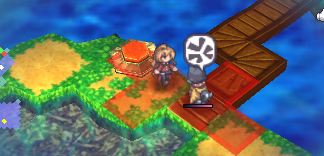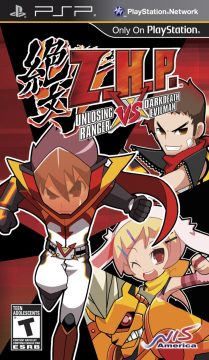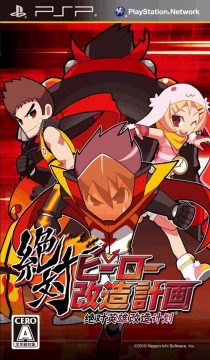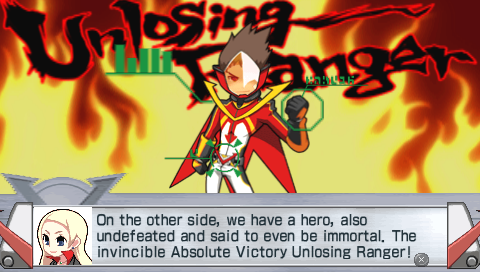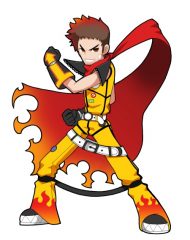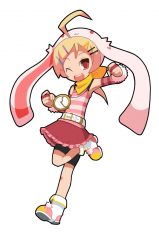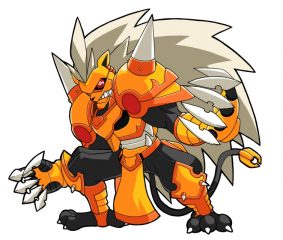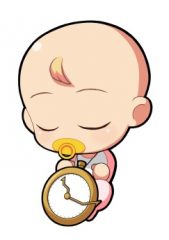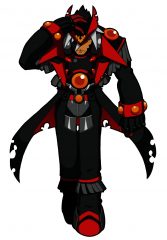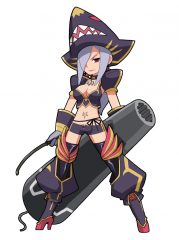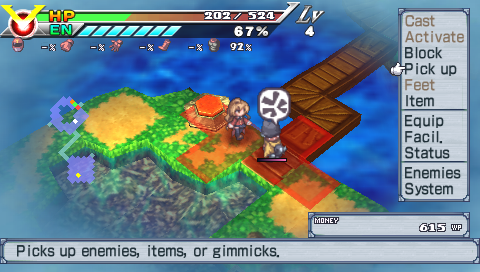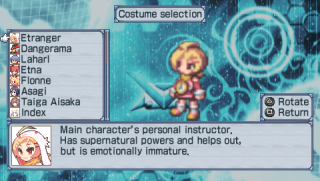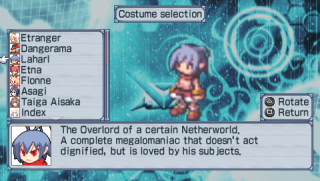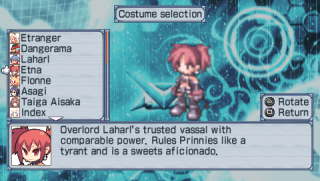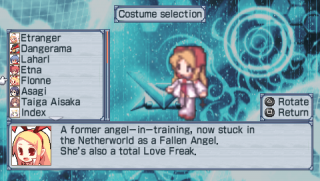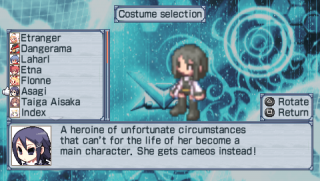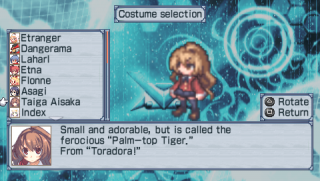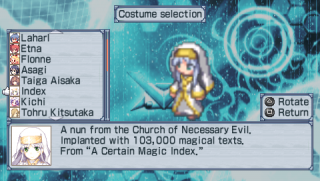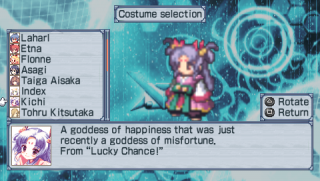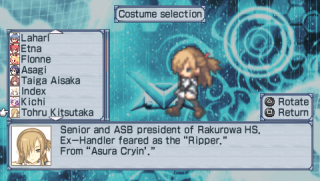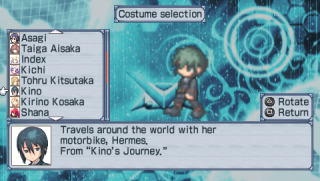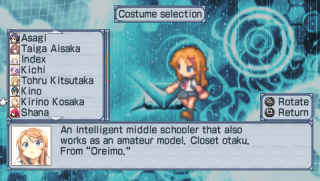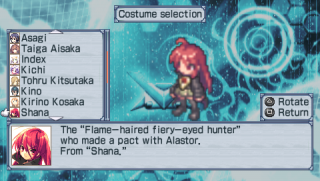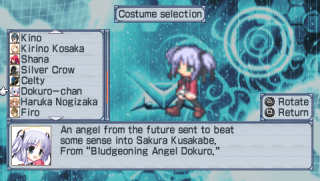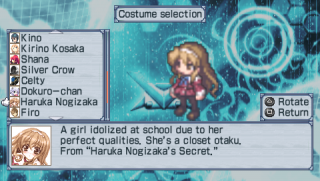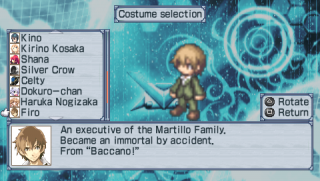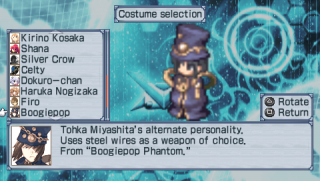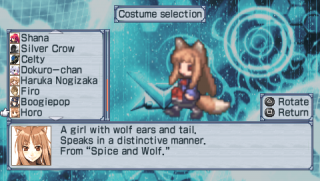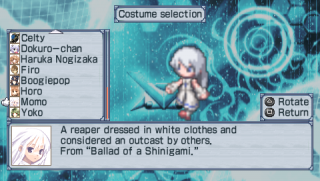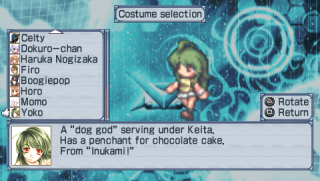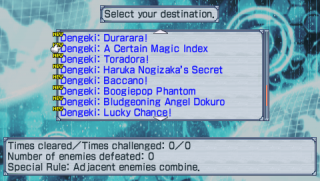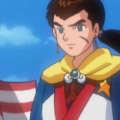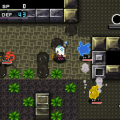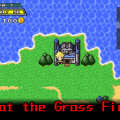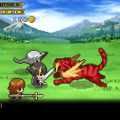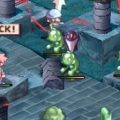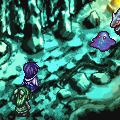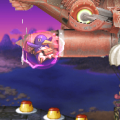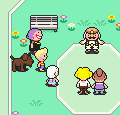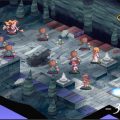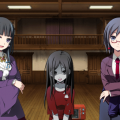Nippon Ichi is mostly known for strategy RPGs like Disgaea and Phantom Brave, but with the PSP title Z.H.P. (Zettai Hero Project) (“zettai” meanining “absolute”) branches out by taking the style and some of the customization elements of their other games and grafting it onto a rogue-like dungeon crawler. While this particular subgenre has become more popular since this game’s initial release, it was a pretty bold move at the time.
The whole game is a parody of Japanese and world culture. The story starts as an homage to Saturday morning cartoon shows as a monstrous enemy named Darkdeath Evilman appears and attempts to destroy the world beginning with a magical infant named Superbaby. Already you know this game doesn’t take itself seriously. The hero, Absolute Victory Unlosing Ranger (calling forth memories of our favorite Mighty Morphin’ Saturday mornings), steps in to intervene…yet before he can show up he is run over by a van. The protagonist is actually a bystander that witnessed this event and is then obligated to don the Sentai suit and do battle in his stead.
The very first battle you partake in this game is actually one in the 8-bit classic RPG style, which looks much like the original Mother or Dragon Quest, complete with low-resolution pixel graphics, white-colored font, and a black background. No matter what action you take (attacking barely scathes Evilman and fleeing results in hilarious failure), your character is creamed.
This sends him to Bizarro Earth (Superman fans, take note) where he must train for hours in dungeons to go back and fight what may seem like mere seconds later on Earth. The protagonist is a constant buttmonkey for everyone’s jokes due to his inability to fight, through no real fault of his own being only just some dude mere minutes ago. Once done a section of dungeons you will invariably have to return again to fight Evilman only to have him cream you once again. The game has plenty of self-referential humor as the hero constantly defeated in the story as in the gameplay. One really nice touch is that after defeating so many sections of dungeon, the battle screen during the Evilman fights will upgrade according to the amount people you have helped during your training. For instance, the first upgrade takes the battle screen from 8-bit to 16-bit RPG, which looks much like Final Fantasy VI‘s battle screen complete with blue menus at the bottom. This is just one of the many nods to gamer culture that will delight any hardcore fan.
The game is also unusually topical for the time. Several times the game references how bad the economy is both on Earth and Bizarro Earth. One early subplot involves helping a German named Frank Furt (uh huh) get his job back after his company fires him due to downsizing. Furthermore, the translator put in all kinds of references including calling the game’s version of the US President Brick Oldllama (though she looks a bit more like Condoleezza Rice) and even sneaks in a nod to South Park with a Chinese character named Chitii Wok.
Characters
The Protagonist (AKA Absolute Victory Unlosing Ranger)
In the RPG tradition, your avatar: the silent hero who is really just some dude who happened to be present when the world’s greatest hero and only hope dies right in front of him. He is constantly reminded that he is only a normal person, and a wimpy one at that due to his frequent deaths.
Pirohiko Ichimanji (AKA The Former Unlosing Ranger)
The former Earth’s greatest hero. He, in ghost form, serves to guide the Protagonist through the trials he must face in order to save the world. He is an unending source of encouragement and optimism despite having been permanently defeated.
Etranger
The Protagonist’s trainer on Bizarro Earth as he prepares to defeat Darkdeath Evilman. She is a foil to Pirohiko as she constantly doubts the likelihood of the Protagonist’s success.
Super Baby
A Child born on the sixth hour of the sixth day of the sixth month but is somehow seen as the ultimate good on Earth. It is the Protagonist’s job to protect Super Baby though she more often than not is protecting herself from a barrage of attacks from Darkdeath while the Protagonist trains on Bizarro Earth.
Your sole character, the Unlosing Ranger, and all of the enemies on the board move around on a grid-based board. Positioning, as in these tactical titles, is key to avoiding damage, as your front affords you much more defense. You also cast spells and specials in a turn-based fashion, first selecting to cast and then a separate action to activate said special. However, the gameplay mostly resembles a dungeon crawler. Though you have an attack button, your character still has to take his turn in battle. This feature is actually a veiled way to combine an attack and wait function that many previous games had as separate functions. In other words, if you want an enemy to walk to you so you may have the first hit, you can attack the air until he arrives.
The game’s level structure is more in line with classic dungeon crawlers as well. Dungeons are randomly generated, as is the loot. Dungeons can be replayed as much as you like and it’s the key to winning at the game. This game is extremely forgiving as a dungeon crawler in that dying is not necessarily a bad thing. As in many games in this subgenre, you will lose all of your items, money, and levels you’ve earned in the dungeon when you die…but only sort of. When you die, the levels you gained while in that dungeon are actually contributed to your base stats. In other words, you are back to Level 0 when you die, but you are a much more powerful Level 0. This way, no excursion into a dungeon is a complete waste of time. You will be going back to the same dungeon you lost in, but you will be stronger, or you can come back later after grinding through one of the earlier dungeons. Completing a dungeon without dying also will add your levels to your base stats and bring you back to Level 0, ensuring you will begin every dungeon at your base level. Your main reward for not perishing is being able to keep your items, money, and, of course, story progression.
Flexibility is a part of what makes ZHP a fun game. While many games in the dungeon crawler category give you many ways to lose, ZHP give you avenues in which to make your character better from a mistake. For instance, all equipment has a durability percentage. Attack with a weapon too much or armor gets attacked veraciously, they will break. However, broken items are not completely useless. Any item you find in a dungeon can be thrown. This is a huge part of the strategy of the game as with many enemies, you will have to whittle down their HP before you fight them in melee combat. Any equipment that has run all the way down does not disappear from your inventory but may be used as ammunition to be thrown at an enemy. There are also many other options. If you have a piece of equipment that is absolutely essential to the completion of a dungeon, you may call the blacksmith just once per dungeon to come fix your item for you on the spot. You may also hold onto the item to repair or create a stronger item with it at the blacksmith in the hubworld if you complete the dungeon. You can even eat (yup) some of your armor. If you die, you’ll get a “phobia” for the monster that killed you, which can cause issues when you face them in future lives. However, when you overcome them, you’ll be more powerful than ever. You can even buy a insurance policies to save some of the items you’ve obtained after dying, although of course it comes at a premium. Finally, you may also use an item of any durability percentage as a means to add bonuses to your base stats via the doctor in the hubworld. With this many options, there is never a point in which a broken piece of equipment is completely useless. Per usual Nippon Ichi standards, the depth is staggering.
You also have to eat in ZHP. Every action you take in the game makes your character hungrier. Keeping well-fed has its bonuses, though. If you take a little damage and you’ve been eating, you will regain HP as you move. If you are starving, your HP will go down. You may also choose to dual-wield weapons the time calls for it, but it will also make you hungrier quicker. So you need to be careful, especially in the later levels, that you balance your exploration and method of attack with your food need or you will surely lose. Luckilly, the game paces these kinds of challenges very well, easing the player into the difficulty that its rules can instill. These elements help the game retain what hardcore fans like about the subgenre but really make it much more bearable for a newcomer and really make it a nice compromise in a difficult kind of game.
Another hardcore feature that must be mentioned is that the game absolutely forbids cheating through game saves. The game makes it clear that if you die during a dungeon, there’s no weaseling out of it. You may only have one save file per game unlike virtually every other PSP game. If you attempt to go back to your single save file point because you are losing at a dungeon, it will get your there, too. If you shut off the PSP’s power without pausing, the game will assume you were trying to get around the save system and will automatically kill your character and boot you out of the dungeon with no bonuses to your base level. Very harsh but it’s great that the creators were aware of savescumming and the people who do it.
Alongside the game, it has the typical Nippon Ichi goofy sense of humor. Prinnies make several cameos in the game, and one specific one is hilariously notable. When in the hubworld, the protagonist can also visit his home which he is also PROVIDED with a “daughter” and a “wife.” The “daughter” is funny enough, as each time you talk to her she will comment on how uncool you are or how you should have gotten her something while you were out (despite you not having anything to do with her birth). However, your “wife” is a Prinny, complete with all the eccentric “Doods.” Even better, much like the blacksmith, you can call your Prinny wife to bring you food one time on the battlefield during each dungeon which results in a guffaw-inducing animated sequence that can only be seen to really fathom.
Nearly all of the dialog is voiced, done very well in English, but also in Japanese if you prefer. Furthermore, every single piece of equipment’s appearance is unique when your character equips it. The sheer amount of sprites made for this feature alone is staggering. It also allows your character to be outfitted as badass (huge swords and mech armor), over-the-top (tank treads and Gatling guns) or as goofy (centaur body and candle hat) as you want them to be.
There are also tons upon tons of anime references and cameos. Much of it may fly over of the head of non-otaku, but anyone with a vague knowledge of sentai shows or tokusatsu movies will be amused. There are also numerous cameos from various manga featured in Dengeki Bunko that take the form of various costumes – Shana from Shakugan no Shana, Kirino from Ore No Imouto Ga Konna Ni Kawaii Wake Ga Nai, Kino from Kino’s Journey, Taiga Aisaka from Toradora (who NIS America owns the North American distribution rights to), Holo from Spice and Wolf, Boogiepop from Boogiepop Phantom, and numerous others. There are also several dungeons named after these series, each of which have different themes, although they don’t have any unique visuals. There are, of course, several Nippon Ichi characters including Asagi, as well as a dungeon named “Netherworld Wars”, after the nebulous “Makai Wars” PSP game that was announced back when the system launched that never came to be.
ZHP is a wonderful surprise. It might look like one of their typical SRPG games at a distance, but it really is entirely unique while featuring some aspects that will seem familiar to fans. Not only does it include their trademark sense of humor but it also includes a unique one that fits the game and the times. The game is forgiving enough and challenging enough, is well-balanced, and is very accessible. This game also marks one of the best games that NIS has put out to date and will surely delight most fans of the company, dungeon crawler enthusiasts, and RPG fans in general.
